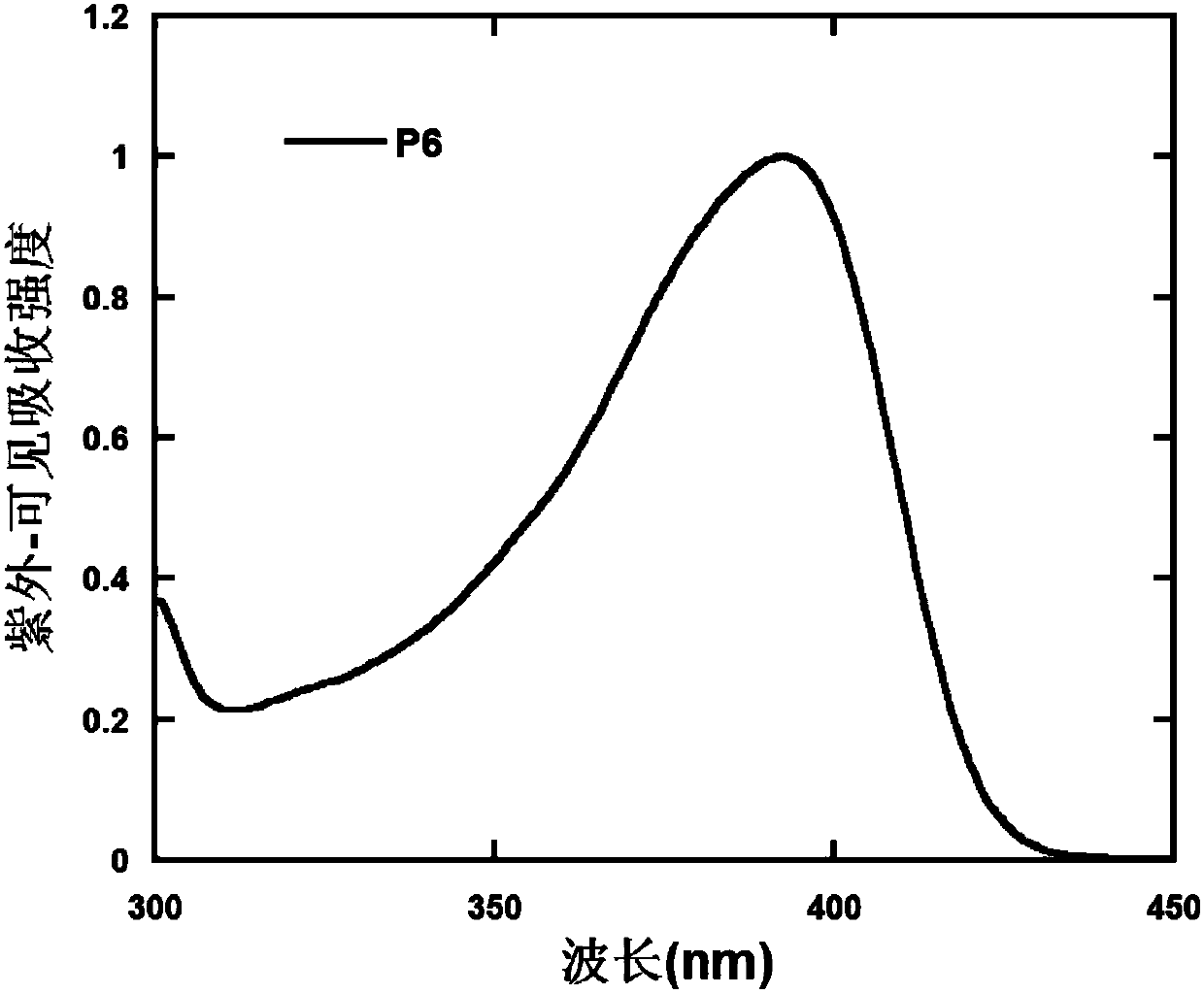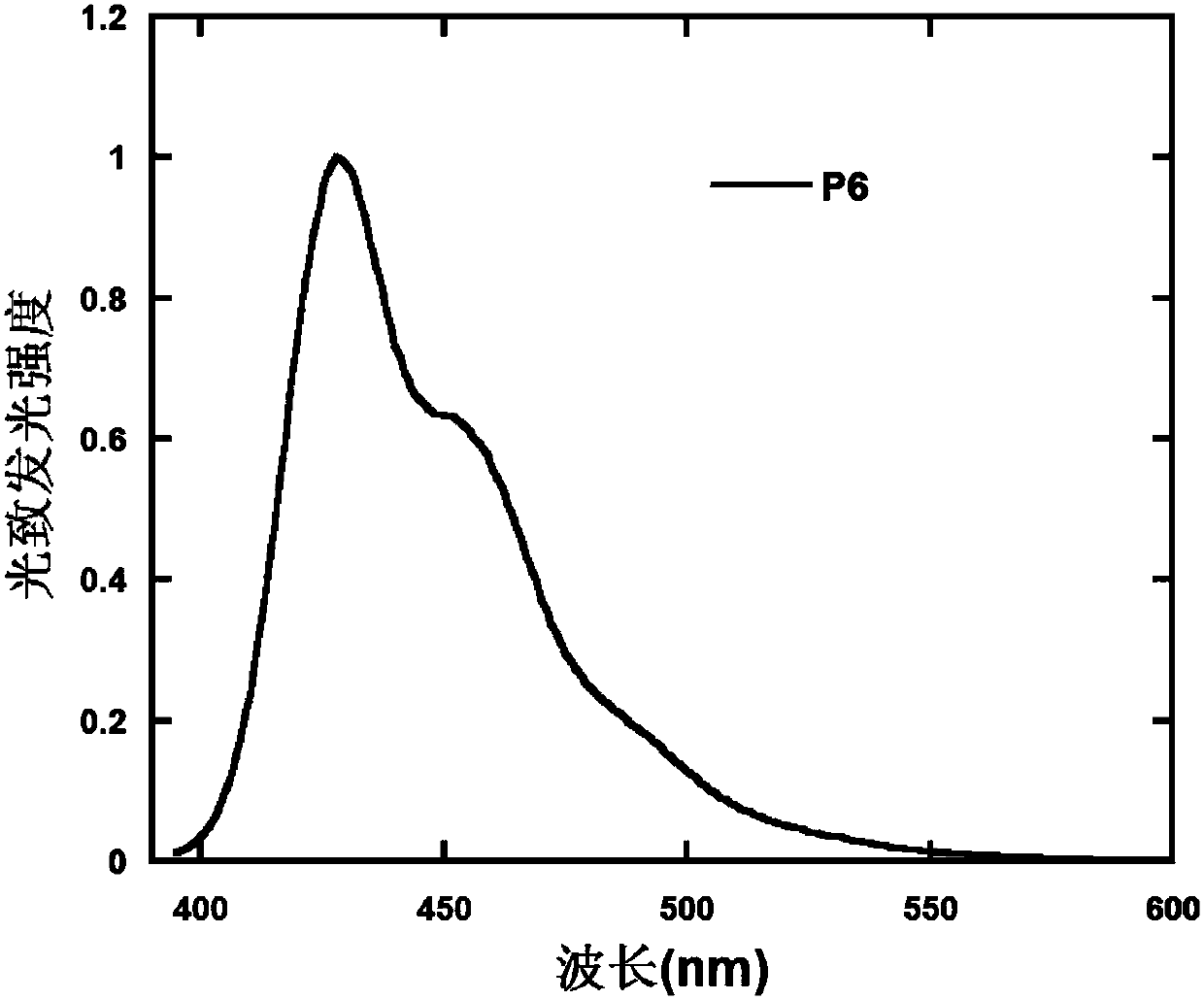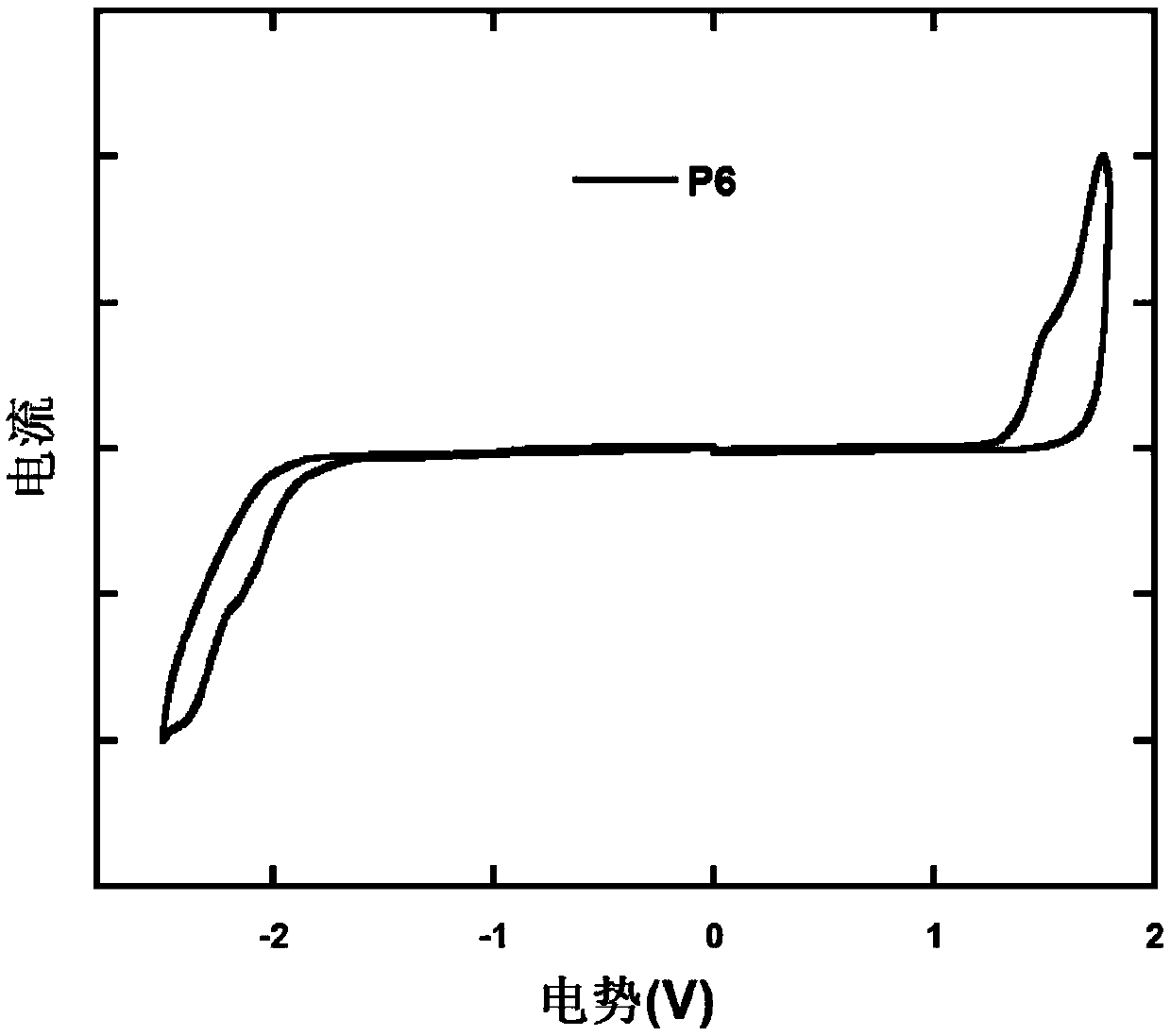Poly(fluorine-co-S,S-dioxo-dibenzothiophene) derivative with hole transport unit in side chain and preparation method and application of poly(fluorine-co-S,S-dioxo-dibenzothiophene) derivative
A technology of dibenzothiophene and hole transport, applied in electrical components, circuits, semiconductor devices, etc., can solve problems such as limited device efficiency and stability, unbalanced carrier transport, and reduced hole transport performance. Achieve the effects of maintaining spectral purity and stability, simplifying the device preparation process, and high fluorescence quantum yield
- Summary
- Abstract
- Description
- Claims
- Application Information
AI Technical Summary
Problems solved by technology
Method used
Image
Examples
Embodiment 1
[0044] Preparation of Compound M1
[0045] Add 2,7-dibromofluorenone (3.38g, 10mmol), triphenylamine (7.36 g, 30mmol), methanesulfonic acid (0.96g, 10mmol) and 50ml carbon tetrachloride in a 100ml three-necked flask, under nitrogen conditions , heated to 90°C for 12 hours; the reaction was completed, the product was extracted with dichloromethane, the organic phase was washed with saturated aqueous sodium chloride, dried over anhydrous magnesium sulfate, the solvent was evaporated, and the crude product was used in petroleum ether: dichloromethane=6 : 1 (v / v) mixed solvent was used as eluent for column chromatography to obtain 7.21 g of white solid with a yield of 89%, (mass spectrum: 810.2).
[0046] The chemical reaction equation is as follows:
[0047]
Embodiment 2
[0049] Preparation of Compound M2
[0050] Add 2,7-dibromofluorenone (3.38g, 10mmol), carbazole (7.30g, 30mmol), methanesulfonic acid (0.96g, 10mmol) and 50ml carbon tetrachloride in a 100ml three-necked flask under nitrogen protection conditions , heated to 90°C for 12 hours; the reaction was completed, the product was extracted with dichloromethane, the organic phase was washed with saturated aqueous sodium chloride, dried over anhydrous magnesium sulfate, and the solvent was evaporated, and the crude product was prepared with petroleum ether: dichloromethane= A 6:1 (v / v) mixed solvent was used as the eluent for column chromatography to obtain 6.69 g of a white solid with a yield of 83% (mass spectrum: 806.2).
[0051] The chemical reaction equation is as follows:
[0052]
Embodiment 3
[0054] Preparation of compound M3
[0055] (1) Synthesis of 3,6-di-tert-butyl-9-phenylcarbazole (compound 1): 3,6-di-tert-butylcarbazole (13.97g, 50mmol), bromobenzene (9.42g, 60mmol), sodium tert-butoxide (9.60g, 100mmol), palladium acetate (0.22g, 1mmol), tri-tert-butylphosphine (0.98g, 2mmol) and 80ml toluene; under nitrogen, react at 80°C for 8 hour; after the reaction was completed, the product was extracted with dichloromethane, and the organic phase was washed with saturated aqueous sodium chloride solution, dried over anhydrous magnesium sulfate, and the solvent was evaporated, and the crude product was purified by column chromatography using petroleum ether as an eluent to obtain a white solid 15.64 g, 88% yield, (mass spectrum: 355.4).
[0056] (2) Preparation of compound M3: Add 2,7-dibromofluorenone (3.38g, 10mmol), compound 1 (10.67g, 30mmol), methanesulfonic acid (0.96g, 10mmol) and 50ml Carbon tetrachloride was heated to 90° C. to react for 12 hours under nitr...
PUM
 Login to View More
Login to View More Abstract
Description
Claims
Application Information
 Login to View More
Login to View More - R&D
- Intellectual Property
- Life Sciences
- Materials
- Tech Scout
- Unparalleled Data Quality
- Higher Quality Content
- 60% Fewer Hallucinations
Browse by: Latest US Patents, China's latest patents, Technical Efficacy Thesaurus, Application Domain, Technology Topic, Popular Technical Reports.
© 2025 PatSnap. All rights reserved.Legal|Privacy policy|Modern Slavery Act Transparency Statement|Sitemap|About US| Contact US: help@patsnap.com



